-Dimmer viewfinder?
I've retained a particular insistence when it comes to cameras. Since 2018 I was dead-set on having a rangefinder be my main camera. They're aesthetically appealing, lighter, smaller cameras whose charm should overcome any technical obsolescence. I should stick with my childhood sweetheart because it's the right thing to do. Sure we have problems but there are few things more romantic, more idealistic. Me and 35SP will work it out as we go, we have all the time in the world with one another. But OM-2 blindsided me in college, filling me up with doubt. How much of my infatuation was driven by a sense of obligation? Will I truly be happy spending the rest of my life with someone like her? Every hushed meeting with OM-2 filled me up with guilty pleasure, I reveled at her ease of use and versatility, the gentle lines of her bulging prism, her svelte frame. My seemingly trivial obligations crumbled in front of me
The camera I'm reviewing today is the OM-4ti, released in 1986 to a lengthy 16-year production run. This was it, the final iteration of the OM series. It in many ways has intersections with the OM-2S with the addition of a handy spot meter and viewfinder readout additions. One of my lingering criticisms of the OM-2 was the lack of aperture/shutter speed readouts in the viewfinder, one cameras like the Minolta XD included in a very legible manner. The OM-4 comes close with a shutter speed indicator right under the meter but it lacks aperture readouts of the XD-11. Shutter speeds on the OM-4ti have also been increased by one stop to 1/2000. A very welcome feature for shooting wide open, although mechanical cameras like the FM2 did manage 1/4000 with a mechanical shutter. Weathersealing is also a unique feature with this camera and with most metal-bodied SLRs. As an electronically driven camera it retains the OTF aperture priority mode of the earlier cameras, a very welcome inclusion.
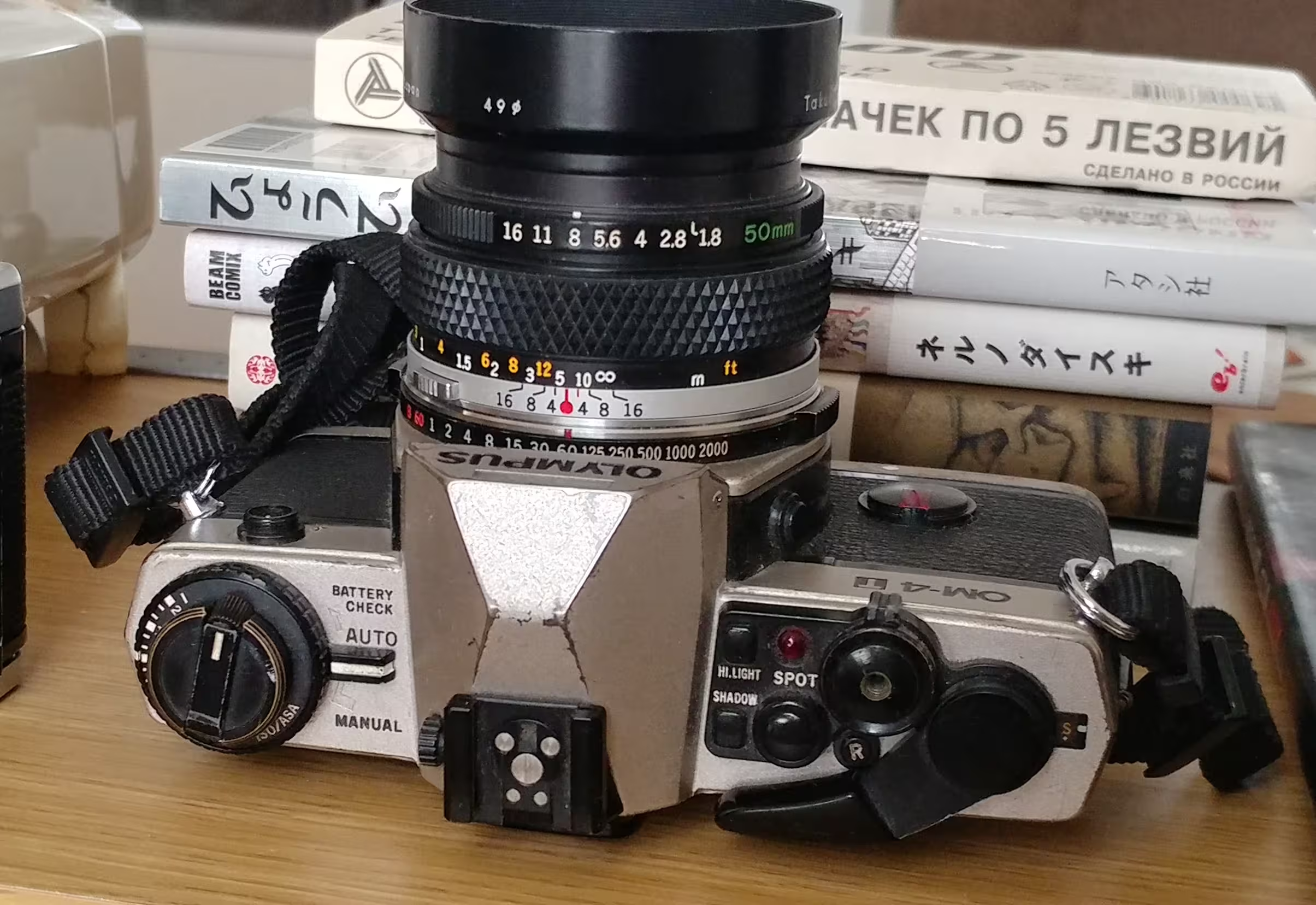
A Dutch photography magazine in 1989 tested this very camera, subjecting it to several tests including:
stored in the freezer overnight at -20C for 8 hours
into the oven for one hour at a temperature of 75C
hung in the grid of the air outlet of a sandblasting company for 2 hours
into a steaming hot shower cabin for an hour
into the shaking machine for a certain time
shutter is operated about 15,000 times
It seemed to do alright, impressive stuff. Why not buy an OM-4 or an OM-2s for ~$70 instead of something like this? Functionally, there's not a huge discrepancy. I went for the titanium version for the clout and it makes for a lighter camera, thematically consistent with the OM ideology. I also purchased it in a bundle with two other lenses, so I got some of my money back through reselling too. The OM-4 also released around the same time as the OM-3, a now very desirable variant with a mechanically-controlled shutter. If you find one for under $300, grab it immediately.
Considering this was a $1000+ camera in the early 2000's, I'm very happy with it. It's the apogee of Olympus' film days and it doesn't leave you hungry for features.
Handling
As expected of a pro camera it feels fantastic. The exposure comp dial is metal instead of the OM-10's plastic and is imbued with satisfying clicks, the advance lever throw feels shorter and tighter relative to the OM-2 and locks into place like the Nikon FM2. As a camera it feels a bit anachronistic, co-existing with virile grandfathers like the autofocus plastic-bodied Nikon F5 and Canon EOS-1. The OM-4's manual everything contrasts the spot metering and weathersealing that you would expect from glossy black cameras. It's also remarkable to think the OM-4T is slightly lighter than the OM-2 despite the additional metering features, weathersealing, and 1/2000 top shutter speed. Still lighter than a plastic-bodied Canon Elan 7 too.
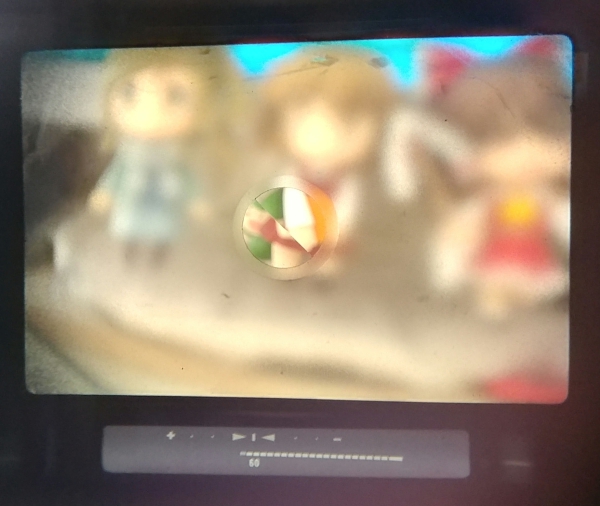
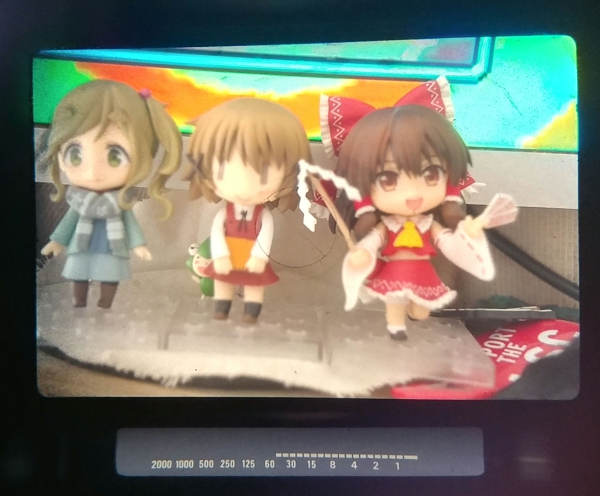
The viewfinder is the star of the show, all of your information being projected at the bottom. Metering information, shutter speed readout, spot meter indicators, it's all there. Nothing intrudes in the viewfinder itself and the graduated meter bar gives you much more precise information than the needle readouts of the OM-2 or the horrific simplistic up/down arrows of the Nikon FM2. It uses reflected light for illumination so there's a secondary LED mode for low-light or night-time shooting. Instead of the on/off meter selector on the OM-2 there's an automatic shut-off, I suspect it's around 30 seconds. It can be triggered by the manual/aperture priority selector or a half-press of the shutter release. I don't mind it, both cameras sip batteries anyway.
Performance
The viewfinder brightness hasn't bothered me and other articles' suggestion that it's a full stop darker than the OM1/2 is nonsense. While I love the concept of an angled split-focus viewfinder, the out of focus bits are less pronounced than the default focus screen. Always interchangable of course, but this was a surprise to me. The prism also hangs over the shutter speed dial obscuring it when looking at it from straight down. A bit baffling but that's what the viewfinder readouts are for. The film advance is fuckin great. Weight is again, only slightly more than the OM-2n, little fatigue when I have it in my hands for hours. The fixed hotshoe will rip your hair out like a vindictive shop lathe.
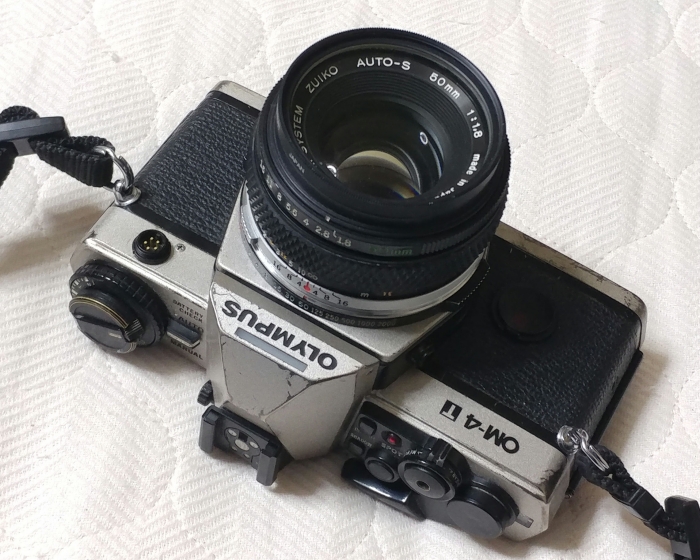
Conclusion
12/18/2020: It's erotic. Some cameras are dripping in testosterone, the Canon F1 would excitedly slap your asscheeks with veined hands shouting "good game." It was a good game. The Nikon F would chainsmoke on a lawn chair while dishing out dogwhistles. The single-digit OM cameras have simple lines, they're smaller, a bit more understated in presentation, a bit twinky.
12/12/2021: Back to shooting with this after using the Canon P for a while, I'm always surprised at how much I enjoy using this camera. I got the 1-4n focusing screen and I think it's my favorite. No split-image rangefinder to get distracted by, I can probably pull focus quicker than a modern Panasonic GH5.
3/1/2022: Shot a bit in sub-zero weather, camera got caked with snow. Did fine. Went the wrong way for the exposure compensation.
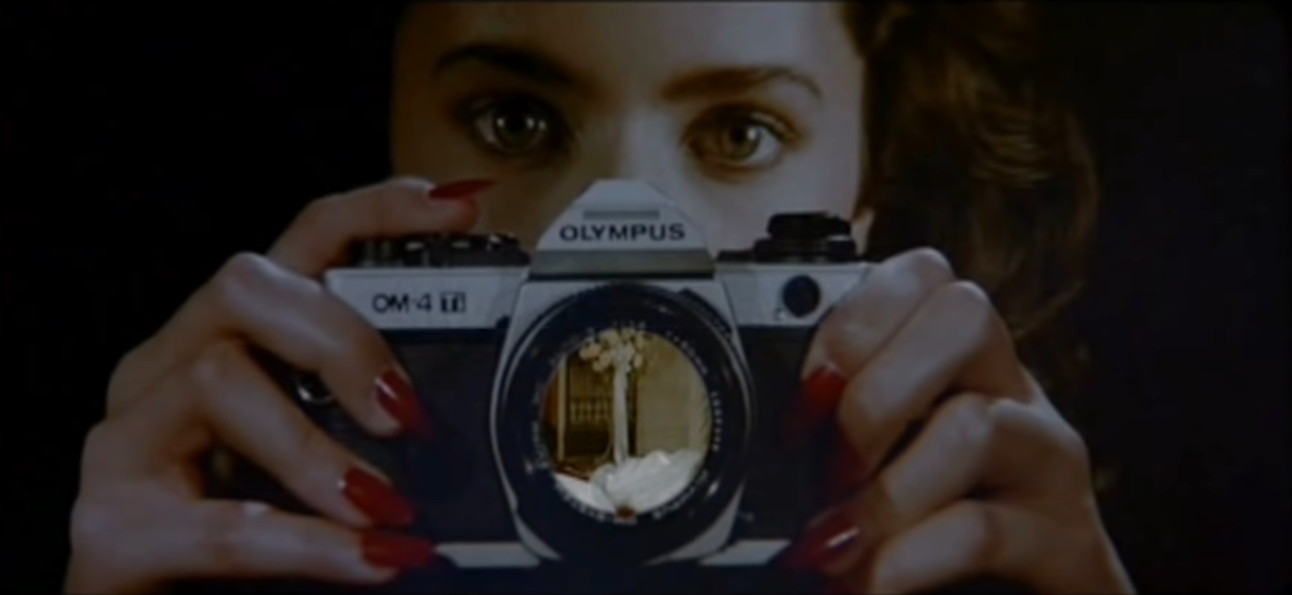
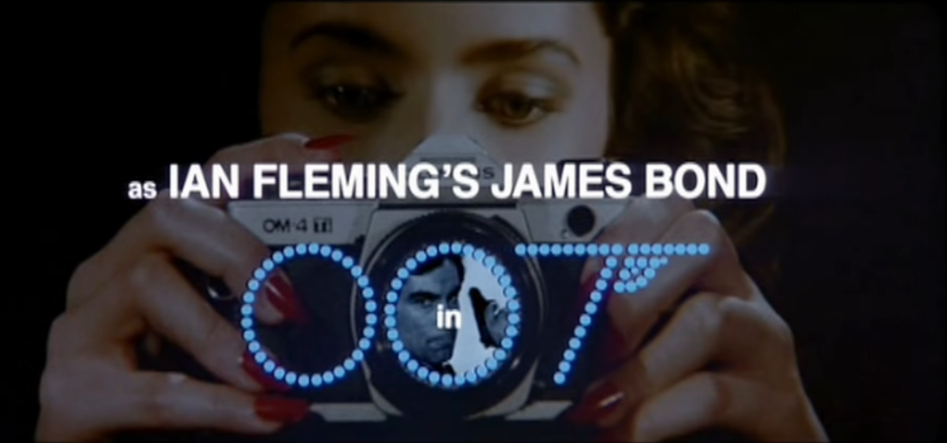 back to top ⤴
back to top ⤴
